

Besançon Citadel History and visit
A place of history
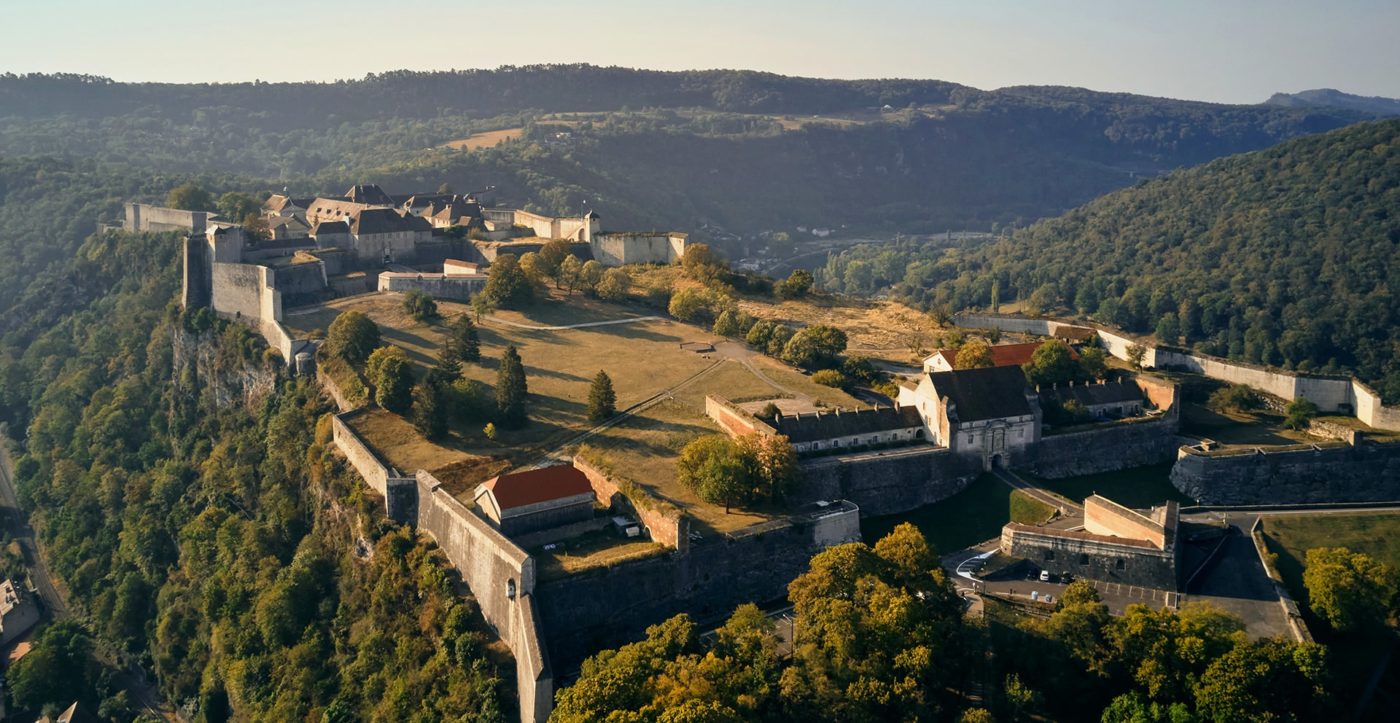
In 1674, Louis XIV, with the help of Vauban, conquered Franche-Comté. Now French, the Sun King gave Besançon an important strategic role: it was to protect the new frontier to the east of the kingdom of France. It was also the new regional capital. Besançon was naturally protected by a meander of the Doubs River, which encircled the city. A mountain closes this loop to the south: it was on this geostrategic site that Vauban decided to build one of Europe's finest strongholds.
The defensive enclosures designed by Vauban always fit in with the landscape, blending in perfectly and often deterring enemy attacks...
The Besançon Citadel is one of the most representative examples of these golden rules, still visible today.
During construction of the fortress, Mont Saint-Étienne, on which the Citadelle is built, was transformed into a veritable stone quarry. The entire square was completed in 1684, 9 years after construction had begun. Its fortifications are tiered according to the relief, creating several levels of fire. The main part of the square housed buildings for the soldiers' daily life.
Over the centuries, the citadel has served as a barracks, a training center for cadets(future officers), a prison and a military penitentiary. The darkest part of its destiny took place during the 1940s, when the monument was the execution site for 98 Resistance fighters arrested in the area and sentenced to death after trial.
Purchased in 1959 by the City of Besançon, it is now a major tourist and cultural attraction in the Franche-Comté region, housing three museums recognized as Musées de France by the French government, and offering a multitude of activities, over a surface area of almost twelve hectares, to some 270,000 visitors a year.
In 2008, Besançon and eleven other French sites in the Vauban Network were inscribed on UNESCO's World Heritage List. These twelve fortifications are considered to be the most representative of Vauban's work, the most authentic and the best preserved. Recognized for their "outstanding universal value", they illustrate Vauban's creative genius, symbolize the apogee of bastioned fortification and have long been a model for military architecture the world over. This prestigious recognition has been awarded to sites all over France: Briançon, Mont-Dauphin, Villefranche-de-Conflent, Mont-Louis, Blaye/Cussac-Fort-Médoc, Saint-Martin-de-Ré, Camaret-sur-Mer, Saint-Vaast-la-Hougue, Arras, Longwy, Neuf-Brisach. This series of sites thus becomes the 32nd French property to be inscribed on UNESCO's World Heritage List, under the name
"Fortifications de Vauban".
Spaces to visit
The Saint-Etienne chapel and its historical multimedia show
A real plunge into the past, this multimedia show takes you back in time and space to discover the key moments in the history of Besançon and the Citadelle. As the story unfolds, you'll follow the various episodes of a fascinating history that began with Julius Caesar, continued through the Middle Ages, then under Charles V, and finally into the 17th century under the tumultuous reign of Louis XIV. The glory days of Vauban and the construction of the Citadelle are retraced, before giving way to contemporary history and its darker periods.
This 15-minute show is an excellent introduction to the visit, giving you the keys to understanding the fortress and making it easier to discover.
Continuous screening in the Saint-Etienne chapel (heart of the site);
3 projections per hour.
Free for Citadelle ticket and season ticket holders.
Discover some extracts by following this link.
Due to a malfunction, the multimedia show is no longer being shown.


Espace Vauban
In the Cadets building, four exhibition rooms present Vauban and his century, that of Louis XIV, Versailles, Molière... They retrace the two French conquests of Franche-Comté, the construction of the citadel and the life of the King's Cadets from 1682 to 1694.
Your journey through time continues in the video area. "Au cœur d'une citadelle", a ten-minute computer-generated film, is shown continuously, retracing the construction stages and role of the buildings on this major Franche-Comté site. Subtitles in French, English, German and Dutch.
A 60 cm3 tactile scale model of the Citadelle's architectural elements (gatehouse, bastion, facing, etc.) can be freely touched. Thanks to this tactile approach, it's possible for everyone to be initiated into the world of the builder's art and to discover the various building materials used. Providing a different way of apprehending space, with plan and volume representation, this model is also of particular interest to visually impaired visitors and children. The tactile model covers a number of topics: 17th-century know-how and techniques, construction trades, the nature and origin of materials, and Vauban's adaptation to the terrain.
The creation of this tactile model was made possible thanks to the support of the Comité d'experts d'usage accessibilité de la Ville de Besançon and the patronage of the Caisse d'Epargne de Bourgogne-Franche-Comté.
Walkways
Continue your stroll along the circular walkways, nearly 600 meters long, 5 to 6 meters wide and 15 to 20 meters high, and enjoy unique panoramic views over the city of Besançon and the exceptional natural setting that surrounds it.
In addition to the lush green hills and the meandering Doubs River, don't miss
to take in the remarkably restored architectural heritage of the building and its various constructions. On either side of the main square, the King's and Queen's gatehouses dominate the site and are the starting point for your discovery of the battlements.

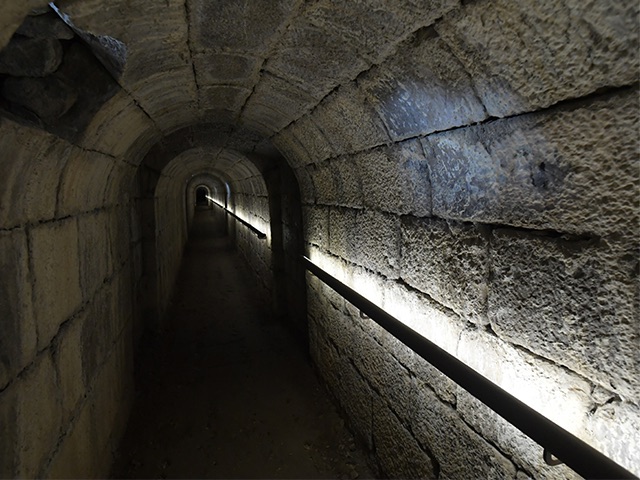
The underground gallery
In the 17th century, most of Vauban's citadels and strongholds were equipped with underground passageways. These were strategic defensive locations. Soldiers could circulate under cover of fire, and could thus hear the arrival of an enemy, or keep watch over city entry points.
At the Besançon Citadel, an underground gallery known as "Communication 110" reveals its secrets during guided tours scheduled according to the season. This 127-meter-long gallery links the Front Saint-Etienne and the Front Royal. In Vauban's time, it enabled soldiers to move around and retreat in the event of an attack. On a guided tour, you can relive the soldiers' daily lives and understand the architecture, history and role of this type of underground passageway.
The Soldiers' Chamber
The dormitory was a living space for the twelve soldiers who
shared it, providing them with a place to sleep, cook, eat and entertain.
This faithful evocation, with furniture and objects, of an interior dedicated to the life of
soldiers of the Sun King allows you to immerse yourself in their daily lives and
discover another facet of this unique site.
In this fully accessible exhibition space, young and old alike can enjoy a unique experience, withoriginal mediation tools including sound effects, virtual reality, costume fittings, etc.
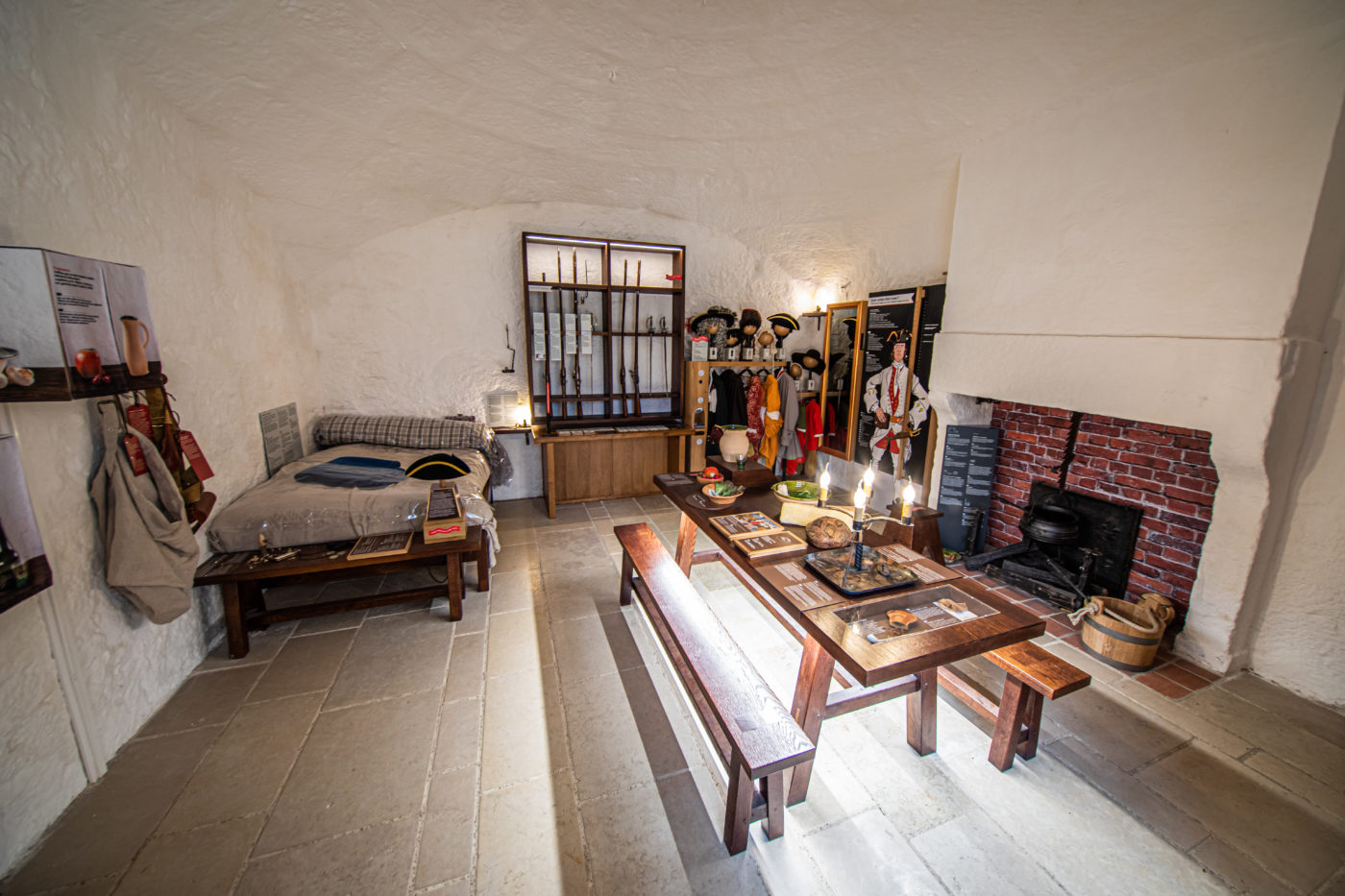
Métropole (Département and DRAC under
reserve). Patrons: Pateu-Robert and C3B.
Guided tours
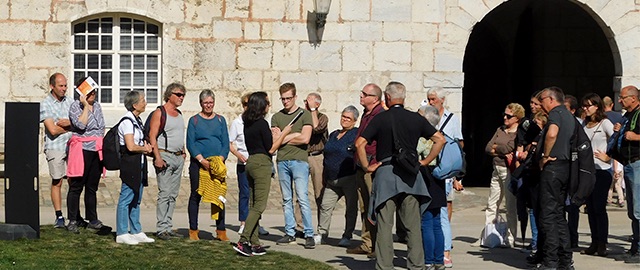
- Citadelle express visit
A quick but intense dive into the site's history, covering the essential stages of the Citadelle from its construction to the present day.
Duration: 30 min. - Secret Citadel visit
A quick but intense dive into the site's history, covering the essential stages of the Citadel from its construction to the present day.
Duration: 1 hr 15 min. - Espace Vauban visit
Discover the history of the site through the Espace Vauban collections: the tactile model, the cannon that defended the town and the military engineer's canteen.
Duration: 45 min. - Visit the Citadel in the 17th century
Plunge into the Grand Siècle to discover the reign of Louis XIV, the construction of the citadel and the daily life of the troops, including the Espace Vauban and the soldiers' barracks.
Duration : 45 min.
Tours led by an actor
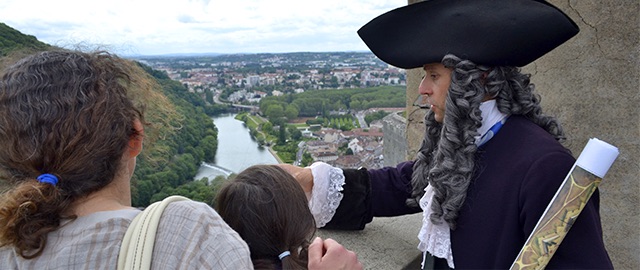
- 2000 years of history" tour
Discover the characteristics of a bastioned fortification, Vauban's work and career, and the different roles played by the Citadelle from its construction to its inclusion on UNESCO's World Heritage List.
Duration : 1h. - Visit "The citadel and water, from bucket to defense".
Behind its stones, the citadel hides water resources and needs. Discover the different uses to which it was put in Vauban's time.
Duration : 1 h. - La Citadelle at sunset" tour
Under the last rays of the sun, enjoy a tour from the heights of the Citadelle for an exceptional discovery of the fortress's architecture and history. Not recommended for people with vertigo or difficulty climbing stairs.
Duration : 1 h. - Guided tour by an actor In the footsteps of Vauban
The illustrious military engineer reveals the secrets of the Citadel and shares his knowledge and passion for the history and architecture of the Citadel.
Duration: 1 hr. The tour may be cancelled 1 h beforehand in the event of a no-show or inclement weather.
Self-guided tour
- With the MaCitadelle application
Equipped with a smartphone or tablet, take the Citadelle by storm with the whole site in your pocket! The MaCitadelle visitor application is designed as a interactive guide allowing you to find your way on the site and discover the Citadelle: its historyhis heritagebut also its museums and animations proposed. You have access to practical and heritage information with multiple reading levels. Content includes text, video, images and slideshows, sound and voice-overs, 2D and 3D animated videos (available in English, German and Italian).
Fun and interactive, the MaCitadelle proposes a choice of courses according to your needs, the time you have available and your desires :- The Site Vauban tour for adults and children (available in French, English, German and Italian),
- The FALC (Facile A Lire et à Comprendre) course for people with intellectual disabilities
- Two quiz games (available in English, French, German and Italian),
- La Citadelle at a glance, with must-sees (available in English, French, German, Italian, Dutch, Spanish and Japanese),
- In conjunction with the Musée de la Résistance et de la Déportation, a tour of symbolic sites linked to the Second World War (available in French, English, German and Italian),
- Wildlife trail (available in French).
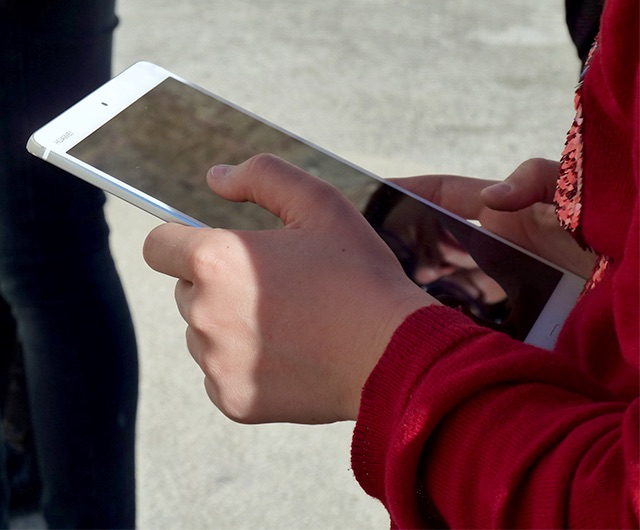
- Tour duration: 45 min. to 2 hrs.
A vast restoration program

La Citadelle is the subject of a regular restoration program designed to enhance the value of this jewel of military architecture, while preserving its original appearance.
Some of these restorations have been highly technical and exemplary, particularly in terms of the mastery of skilled craftsmanship, such as the repair of roof frames and roofs.
These heritage restoration operations are also respectful of biodiversity: work does not take place during Peregrine Falcon and Eagle Owl nesting periods, and cavities are created in the restored sections to provide shelter for wildlife, for example.
2012-2014
Restoration of the Front Royal half-moon
2015-2022
Restoration of the King's and Queen's gatehouses
Restoration of the two covered walkways
Re-roofing of the Saint-Etienne powder store at the bottom of the site
Restoration of the staircase leading to the Musée Comtois
The 2015-2022 works plan, worth €6m, has enabled fourteen new operations to be carried out on Besançon's fortifications, including seven at the Citadelle.
A new plan is currently being drawn up, with work due to resume at the end of 2024. This will involve the first front of the Citadelle (Front Saint-Etienne), including one of the brick transverse walls, the bridge leading to the Front Royal and the outer wall of the Front de Secours.
